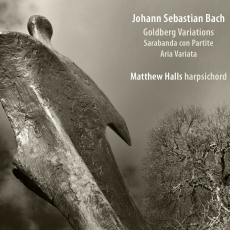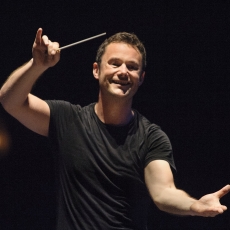Goldberg Variations - Matthew Halls - International Record Review
Hard on the heels of Andreas Staier's recording of the Goldberg Variations (reviewed last month) comes a no-less-fascinating performance by the young conductor, continuo player and harpsichord soloist Matthew Halls. A former Artistic Director of The King's Consort and the founder of the Retrospect Ensemble, Halls offers an approach which perfectly complements and contrasts with that of Andreas Staier. The latter's chosen instrument was a modern copy of an instrument by Hieronymus Hass, with the widest range of colour and registrations (‘theoretically a total of fifty-nine combinations'), and Staier's performance is suitably public with a real sense of grandeur and display. The booklet offers little information of Halls's chosen instrument, except that it is a two-manual harpsichord by Ian Tucker (based on instruments by Ruckers and Hemsch), and while it does not offer the variety of Staier's there is more than enough, and it is entirely suitable for a performance that above all emphasizes the intimacy of this work, with a relatively thin tone but alleviated by slow decay.
Bach described the work on the frontispiece as being ‘Composed for music-lovers, To refresh their spirits', and Halls is suitably restrained, with less emphasis on the overt display than many, though when caked for his technical prowess is a match for any. I heard Halls play the Goldbergs live some two years ago and I remember being beguiled by the lack of affectation or ostentation to a performance in which the entire work appeared to gradually and organically unfold. There is little showmanship here but instead a natural grace and refinement, and a lightness of touch and delicacy of ornamentation, often florid and extravagant, that is perhaps more reminiscent of the French clavecinistes than their German counterparts. Much of Halls's ornamentation feels entirely spontaneous and often the tempos take a short while to settle: there's an improvisatory feel and a fluidity to this reading, almost as if sleepwalking, not inappropriate if one believes the popular fable as to the work's genesis. Halls's tempos err on the slow side and he observes all the repeats, but interestingly, as seems to fit his overall conception of the work, he is less indulgent in the minor key variations, especially in No. 25 (the ‘black pearl' as named by Wanda Landowska).
Equally distinguished are the performances of the two very fitting couplings which are placed on either side of the Goldbergs, the latter therefore being divided evenly across the two CDs. The Sarabanda con Partita, BWV990 is a set of variations on the harmonic structure if the opening Sarabande and while it seems unlikely to have been penned by Bach himself it provides a fascinating coupling, its 16 movements concluding with a four-movement suite. The Aria Variata, BWV989 also consists of harmonic rather than melodic variations, much of it in two-part writing but culminating in a final virtuoso tour de force.
Halls provides his own scholarly and eminently readable programme notes, a model of their kind and fantastically thorough. Linn has done him justice with a finaly balanced recording which avoids the slightly oppressive closeness of Staier's account. Highly recommended.

